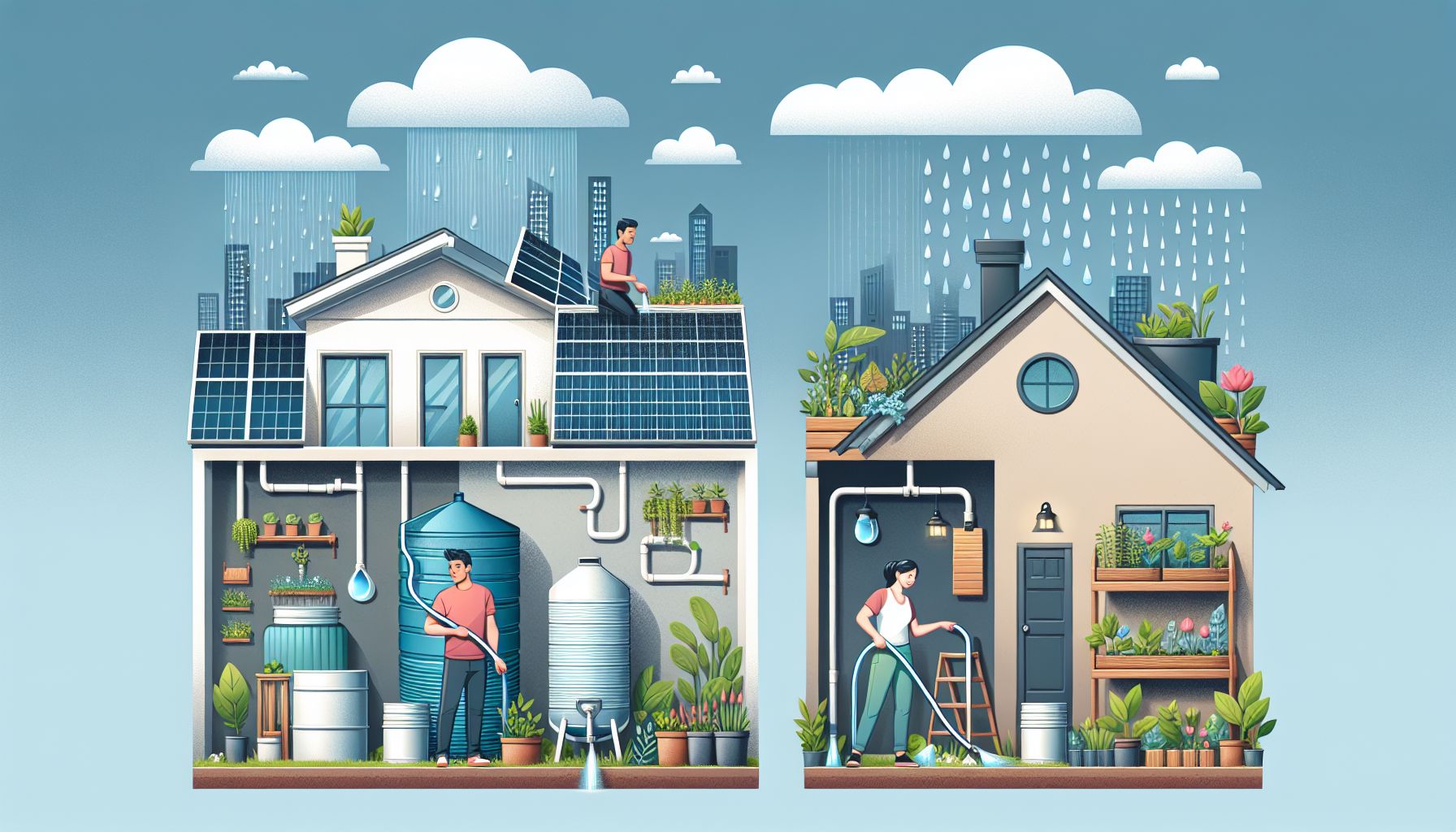As the world faces increasing water scarcity and droughts become more frequent, it is crucial for households to find sustainable solutions to conserve and utilize water efficiently. One effective method that urban households can adopt is rainwater harvesting. This practice involves collecting rainwater that falls on the roofs of buildings and storing it for later use. Rainwater harvesting not only helps to reduce the demand for municipal water supply but also provides a free source of water for various purposes such as gardening, washing, and flushing toilets.
Benefits of Rainwater Harvesting
Rainwater harvesting offers numerous benefits for urban households and the environment. Some of the key advantages include:
- Reduced water bills: By harvesting rainwater for non-potable uses, households can reduce their reliance on expensive municipal water supply and save money in the long run.
- Conservation of freshwater resources: By using rainwater for activities like watering plants and washing cars, households help to conserve precious freshwater resources for essential purposes.
- Ease of implementation: Rainwater harvesting systems can be easily installed on residential buildings with minimal cost and effort, making it an accessible option for urban homeowners.
- Reduction of stormwater runoff: Harvesting rainwater helps to mitigate urban flooding and reduce the strain on drainage systems during heavy rainfall events.
Techniques for Rainwater Harvesting
There are several techniques that urban households can use to harvest rainwater effectively. Some popular methods include:
-
Rain Barrels: Rain barrels are simple and cost-effective containers that can be placed under downspouts to collect rainwater from the roof. The collected water can then be used for watering plants or washing outdoor surfaces.
-
Rainwater Tanks: For larger storage capacity, households can invest in rainwater tanks or cisterns that are connected to the gutter system of the building. These tanks can store a significant amount of rainwater for various household uses.
-
Green Roofs: Green roofs are a unique method of rainwater harvesting that involves installing vegetation on the roof surface. The plants absorb rainwater and reduce runoff while providing insulation and improving air quality.
-
Permeable Paving: Permeable paving materials, such as porous concrete or gravel, allow rainwater to infiltrate the ground instead of running off into storm drains. This helps to recharge groundwater and reduce erosion.
Case Study: Singapore’s Rainwater Harvesting Program
Singapore is a prime example of successful rainwater harvesting implementation in an urban setting. The city-state has adopted a comprehensive rainwater harvesting program as part of its sustainable water management strategy. With limited freshwater resources and a high population density, Singapore relies on rainwater harvesting to supplement its water supply and reduce dependence on imported water.
Singapore’s Housing and Development Board (HDB) has mandated the installation of rainwater harvesting systems in all new public housing blocks to capture rainwater for common area uses like landscaping and cleaning. Additionally, the National Environment Agency (NEA) provides incentives for private homeowners to retrofit their buildings with rainwater harvesting systems through rebates and grants.
Conclusion
In conclusion, rainwater harvesting is a practical and eco-friendly solution for urban households to conserve water and reduce their environmental impact. By implementing rainwater harvesting techniques, homeowners can contribute to sustainable water management and resilience to drought conditions. With the right infrastructure and support from local authorities, rainwater harvesting can become a mainstream practice in urban areas, helping to secure water availability for future generations.
Sources:
1. Singapore’s Sustainable Water Management: https://www.pub.gov.sg/smartwater/overview/sustainablewatermanagement
2. Rain Barrels and Rainwater Harvesting: https://www.epa.gov/sites/production/files/2019-07/documents/rain-barrels-and-rainwater-harvesting.pdf
